Are you new to bowhunting and looking for advice on using a recurve bow? In this in-depth guide, we’ll cover the basics of recurve bow hunting and provide tips to help you improve your skills.
Whether you’re a beginner or have some experience, this post is for anyone who wants to learn more about successful hunting with a recurve bow. So grab your gear and let’s get started!
Understanding The Basics of Recurve Bow Hunting
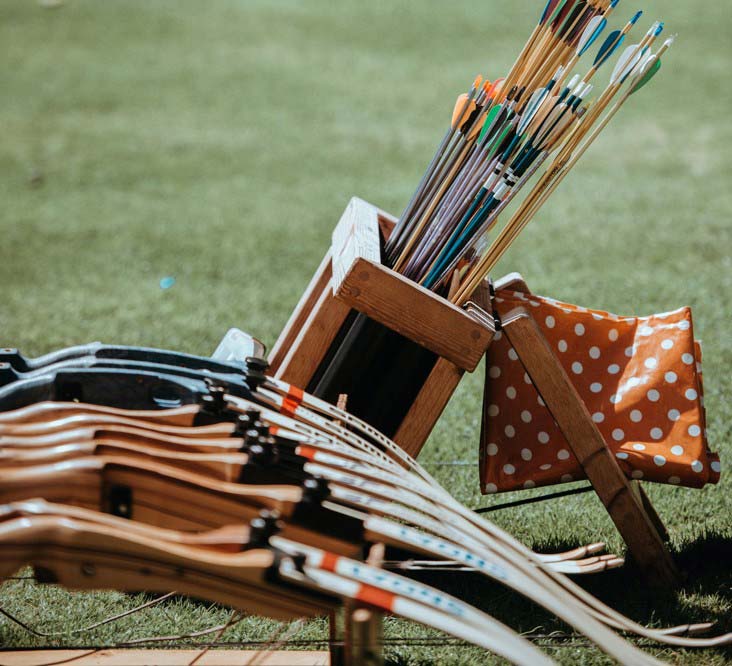
When it comes to recurve bow hunting, understanding the basics is essential. One key factor to consider is your draw length. Make sure you select a bow that suits your personal measurements.
Another important aspect of using a recurve bow for hunting is consistency in your shooting technique. Take time to practice drawing and releasing the string smoothly, and ensure proper finger placement on each shot.
Mastering the equipment and shooting techniques and becoming proficient at stealth tactics can greatly increase your chances of success while out in the field.
Focusing on sound control, scent elimination, and strategic movements can help you get closer to your prey undetected.
And remember, patience and persistence are key when it comes to successful recurve bow hunting!
Selecting The Right Equipment
Choosing the appropriate draw weight and picking arrows that match your bow’s specifications are crucial when recurve bow hunting.
Investing in quality accessories such as a quiver and arm guard will also improve your overall experience. Here are some tips on selecting the right equipment:
- Choose the right draw weight based on your physical ability and the type of game you plan to hunt.
- Match the arrow spine, length, and weight to your bow’s specifications for consistency and accuracy.
- Invest in high-quality accessories like a quiver to keep arrows organized and an arm guard to protect against string slap.
Remember, proper equipment selection is essential for success in deer hunting with a recurve. Take time to do research before making any purchases or upgrades.
Choose The Right Arrow for Recurve Bow Hunting
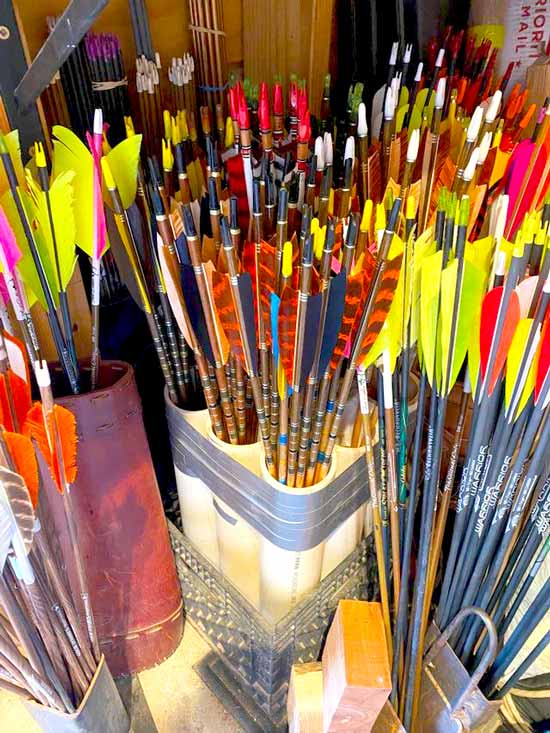

Choosing the right arrows is crucial for recurve bow hunting. The weight, length, and material of the arrows can affect their trajectory and penetration, so you need to select the ones that match your bow’s draw weight and your hunting style.
When selecting arrows, consider the following factors:
- Spine: The spine of an arrow refers to its stiffness. A stiffer arrow will fly straighter and faster, while a softer arrow will bend more and lose speed. Make sure to choose arrows with the right spine for your bow’s draw weight and length. You can use a spine chart or consult with a professional archer to determine the right spine for your setup.
- Length: The length of an arrow should be proportional to your draw length and the type of hunting you will be doing. Longer arrows can provide more stability and accuracy, while shorter arrows can be more maneuverable and faster. Make sure to measure your draw length and choose arrows that are at least one inch longer than your draw length.
- Material: The material of an arrow can affect its durability, weight, and cost. Common materials include wood, aluminum, carbon, and composites. Each material has its pros and cons, so make sure to choose the one that fits your budget and preferences.
- Fletching: The fletching of an arrow refers to the feathers or vanes that stabilize its flight. Make sure to choose fletching that matches the type of hunting you will be doing and the weather conditions you will be facing. For example, longer and stiffer fletching can provide more stability in windy conditions, while shorter and softer fletching can provide more speed in calm conditions.
Proper Shooting Technique For Recurve Bow Hunting


Now that you have the right equipment, it’s time to learn the proper shooting technique.
- Stance: Stand with your feet shoulder-width apart and perpendicular to the target.
- Grip: Hold the bow with a relaxed grip. Avoid gripping too tightly, as this can affect your aim and accuracy.
- Anchor point: Consistently anchor your hand to the same point on your face. This will help ensure consistent shot placement.
- Aim: Focus on the target and align the bow sight or arrow tip with your desired point of impact.
- Release: Release the bowstring smoothly and consistently. Avoid jerking or flinching, as this can affect your shot.
Stance
Stand with your feet shoulder-width apart and perpendicular to the target. Keep your body relaxed and balanced.
Grip
Hold the bow with a relaxed grip. Avoid gripping too tightly, as this can affect your aim and accuracy.
Anchor point
Consistently anchor your hand to the same point on your face. This will help ensure consistent shot placement.
Aim
Focus on the target and align the bow sight or arrow tip with your desired point of impact.
Release
Release the bowstring smoothly and consistently.
Avoid jerking or flinching, as this can affect your shot. Keeping a relaxed and balanced stance is important for shooting accuracy.
Avoid gripping the bow too tightly to maintain aim and accuracy. Consistently anchoring your hand to the same point on your face helps ensure consistent shot placement.
Focus on the target and align your bow sight or arrow tip for accurate aiming. A smooth and consistent release of the bowstring is crucial for accurate shots.
Choosing the Right Arrow Length and Weight
When it comes to arrow length and weight, there is no one-size-fits-all solution. The ideal length and weight for your arrows depend on various factors, including your draw length, draw weight, and shooting style.
Consider your draw length
Your draw length is the distance between the bowstring and the deepest part of the grip when you are at full draw. Choosing arrows that are too short or too long can negatively impact your shooting accuracy.
Take into account your draw weight
Your draw weight is the amount of force required to pull the bowstring back to its full draw length. Arrows that are too light may not have enough momentum, while arrows that are too heavy can be difficult to shoot accurately.
Factors in your shooting style
Different shooting styles, such as target shooting or hunting, may require different arrow lengths and weights. Consider the type of shooting you will be doing and choose arrows accordingly.
Developing Consistent Release
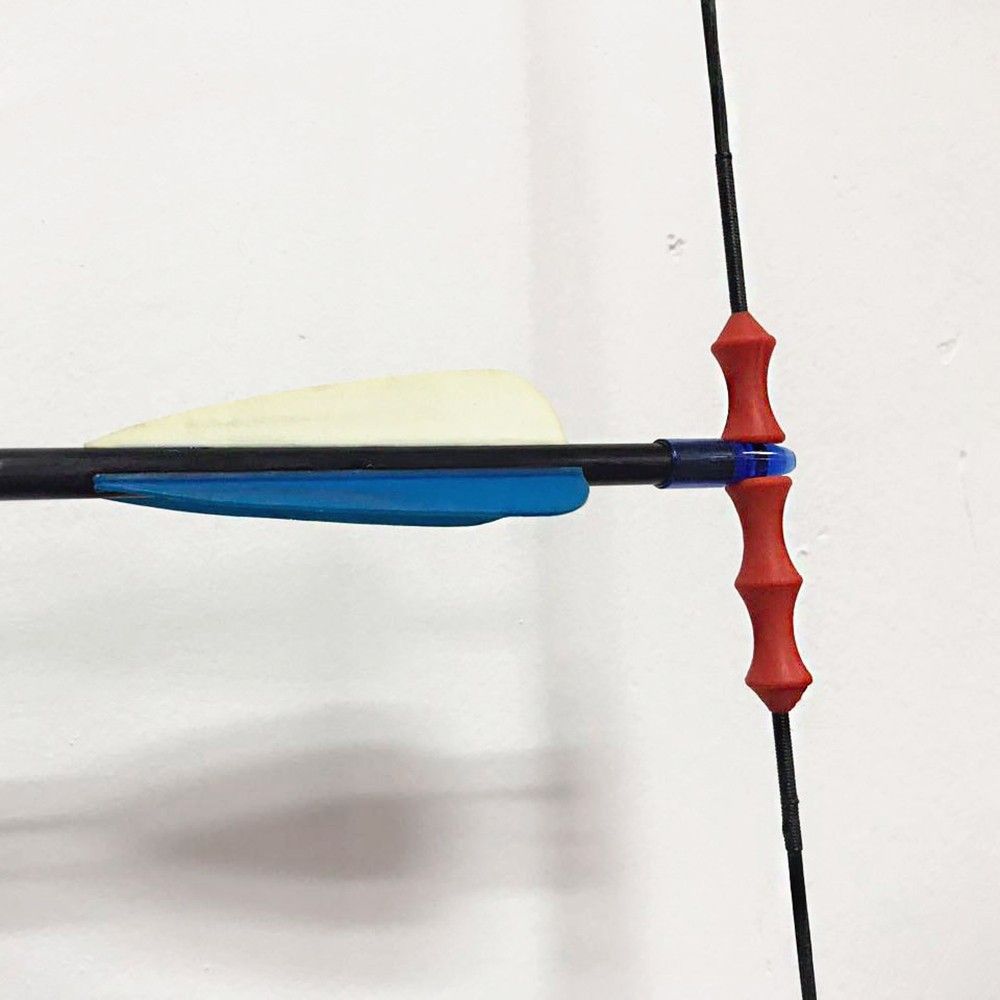

Here are some tips to help you develop a smooth and repeatable release:
- Use your back muscles: Instead of relying solely on your fingers to release the string, engage your back muscles to create a more controlled and consistent release.
- Follow through: After releasing the string, maintain your form and follow through with your shot. This helps ensure that you maintain proper alignment and minimize any unnecessary movement.
- Practice with a clicker: A clicker is a device that attaches to your bow and produces an audible click when you reach your desired draw length. Using a clicker can help you develop a consistent release by providing a clear signal for when to release the string.
Use your back muscles
Instead of relying solely on your fingers to release the string, engage your back muscles to create a more controlled and consistent release.
Follow through
After releasing the string, maintain your form and follow through with your shot. This helps ensure that you maintain proper alignment and minimize any unnecessary movement.
Remember to maintain your form and follow through with your shot to maintain proper alignment and minimize unnecessary movement.
Practice with a clicker.
A clicker is a device that attaches to your bow and produces an audible click when you reach your desired draw length. Using a clicker can help you develop a consistent release by providing a clear signal for when to release the string.
Perfecting Your Aiming Technique For Recurve Bow Hunting


Use the correct sight picture
Align the sight pin or aperture with your target, ensuring that the pin is centered and level. This will help you achieve a consistent and accurate goal.
Practice focusing techniques
Experiment with different focusing techniques, such as using your dominant eye or using both eyes open, to find the method that works best for you.
Control your breathing
Take slow, deep breaths and release them steadily to help steady your aim. Avoid holding your breath, as it can cause tension and affect your accuracy.
Stealth and Camouflage: Becoming One with Your Surroundings
In the world of recurve bow hunting, stealth is paramount. Successfully getting within range of your prey requires blending seamlessly into your surroundings and minimizing any unnatural movements or sounds.
Dress Appropriately
Choose camouflage clothing that matches the environment you’ll be hunting in. Opt for quiet fabrics that won’t rustle or make noise as you move through the brush.
Use Cover effectively
Take advantage of natural cover such as trees, bushes, or rocks to break up your silhouette and remain hidden from your prey’s line of sight.
Maintain Controlled movements
Move slowly and deliberately, avoiding sudden jerky motions that may startle nearby animals. Practice stalking techniques to improve your ability to close the distance without detection.
Minimize Scent
Animals have a keen sense of smell, so take measures to minimize human scent by using scent-eliminating sprays and washing your hunting gear with unscented detergents.
Did you know that some animals can detect human scent from miles away? By following these tips, you can increase your chances of getting close to your prey undetected.
Remember, the key to successful hunting is to become one with your surroundings and minimize any disturbances that may alert your prey.
Choosing the Right Hunting Spot


Scout the area
Spend time observing the area before your hunt. Look for signs of animal activity such as tracks, droppings, or feeding areas.
Consider the wind
Pay attention to the wind direction and choose a spot that allows you to approach your prey without your scent being carried towards them.
Look for Natural features
Find areas with natural features that attract animals, such as water sources, food plots, or dense cover.
Study the terrain
Familiarize yourself with the terrain and choose a spot that provides good visibility and shooting lanes. Did you know that animals are more likely to approach water sources in the early morning and late afternoon?
By considering these factors and choosing the right hunting spot, you can increase your chances of encountering game and having a successful hunt.
Mastering the Art of Silence: Recurve Bow Hunting
When hunting with a recurve bow, silence is key. Here are some tips to help you master the art of silence:
Choose Quiet gear
Opt for gear that doesn’t make noise when you move, such as quiet boots and a silent release for your bow.
Practice Stealthy movements
Practice moving quietly through different terrains to improve your ability to remain silent while hunting.
Control Your breathing
Reduce any noise your heavy breathing may be making by taking slow, controlled breaths.
Be Mindful of Your surroundings
Pay attention to the ground you’re walking on and avoid stepping on twigs or dry leaves that may make noise. Did you know that some animals can hear frequencies that are beyond the range of human hearing?
By mastering the art of silence, you can increase your chances of getting close to your prey without alerting them to your presence.
Respect For The Animal
Recurve bow hunting requires deep respect for the animal and the hunting tradition. Unlike other forms of hunting, using a recurve bow means that you need to get closer to the prey, which requires more patience and stealth.
Avoid unnecessary risks and only shoot ethical rounds that will result in a speedy and compassionate death. There are multiple options for hunting.
Also, make sure to use the entire animal and not waste any parts or meat, and respect the natural habitats and ecosystems.
Some ethical hunting practices that you should follow include:
- Know your limits: Make sure to only take shots that you are confident and comfortable with, and avoid taking shots that are beyond your skills or the bow’s capabilities. This will ensure that you make a humane and effective kill and avoid injuring or stressing the animal unnecessarily.
- Respect the animal: Once you have harvested the animal, make sure to treat it with respect and dignity. Use the meat and other parts of the animal, and avoid wasting any of them. Also, make sure to dispose of the remains properly and avoid littering or polluting the environment.
- Respect the environment: Hunting with a recurve bow requires you to be in tune with the natural environment and wildlife. Make sure to avoid disturbing other animals or habitats, and leave the environment as you found it. Also, make sure to follow any leave-no-trace policies or guidelines and avoid damaging or altering the natural resources.
Understanding Animal Behavior and Patterns
To increase your chances of a successful hunt, it’s crucial to understand the behavior and patterns of the animals you’re targeting. By observing their habits and learning about their natural instincts, you can anticipate their movements and position yourself accordingly.
Study animal tracks
Familiarize yourself with the tracks and signs left behind by the animals you’re hunting. This knowledge will help you identify their travel routes and feeding areas.
Learn vocalizations and calls
Different animals communicate through various vocalizations and calls. Understanding these sounds allows you to mimic them effectively, attracting curious prey within range.
Observe feeding patterns
Animals tend to follow consistent feeding patterns based on the time of day or season. By studying their habits, you can plan your hunts during periods when they are most active.
Be patient and observant when recurve bow hunting
Hunting requires patience and keen observation skills. Spend time in the field quietly watching and listening for any signs of movement or activity.
By studying the feeding patterns of animals, you can plan your hunts during periods when they are most active. Remember, hunting requires patience and keen observation skills.
Spend time in the field quietly watching and listening for any signs of movement or activity.
Understanding Animal Senses
Animals have highly developed senses that they rely on to survive in the wild. Understanding how these senses work can give you an advantage when hunting.
Sight
Animals have different visual capabilities.
Some have excellent night vision, while others rely on their keen sense of motion detection. Consider the visual abilities of the animals you’re hunting and adjust your hunting strategies accordingly.
Hearing
Many animals have highly sensitive hearing, allowing them to detect even the slightest sounds. Be mindful of your own noise levels and try to minimize any unnecessary sounds that could alert your prey.
Smell
Animals have a strong sense of smell that they use to detect predators and find food. Avoid using scented products and be aware of wind direction to prevent your scent from giving away your presence.
Taste
While taste may not be as relevant to hunting, it’s important to note that some animals have specific dietary preferences. Understanding their preferred food sources can help you locate them more effectively.
Touch
Animals use their sense of touch to navigate their environment and interact with other animals.
Be aware of any physical barriers or obstacles that could alert your prey to your presence. Did you know that animals have different visual capabilities?
Some have excellent night vision, while others rely on their keen sense of motion detection. Many animals have highly sensitive hearing, allowing them to detect even the slightest sounds.
Be mindful of your own noise levels to avoid alerting your prey. Animals have a strong sense of smell that they use to detect predators and find food.
Shot Placement: Ethical and Effective Harvesting
As responsible hunters, it is our duty to ensure ethical harvesting practices. Proper shot placement is essential to minimize suffering and maximize efficiency.
Aim for vital organs
The heart and lungs are the primary targets for an ethical kill. Practice shooting at life-sized targets to familiarize yourself with the ideal shot angles and placements.
Consider quartering shots
In certain scenarios, such as when an animal presents a quartering-away angle, adjusting your aim slightly forward can increase the chances of hitting vital organs.
Avoid risky shots
It’s important to prioritize clean and humane kills over risky shots that may result in wounded animals. Be patient and wait for the right opportunity to take a well-placed shot.
Track your prey
After taking a shot, carefully observe the animal’s reaction and any signs of blood trails or tracks. This will help you determine the effectiveness of your shot and aid in tracking if necessary.
Preparing for Your Hunt: Physical Conditioning and Mental Focus
Recurve bow hunting requires both physical conditioning and mental focus. Preparing yourself physically and mentally before heading into the field can greatly enhance your overall performance.
Engage in regular exercise
Strengthening your core muscles, particularly those involved in drawing and holding the bow, will improve your stability and endurance during hunts.
Practice shooting under various conditions
Familiarize yourself with shooting in different weather conditions, terrains, and distances. By exposing yourself to diverse scenarios, you’ll become more adaptable and confident in the field.
Did you know?
By practicing shooting under various conditions, you can improve your adaptability and confidence in the field.
Maintain a positive mindset
Hunting can be challenging and unpredictable. Cultivate a positive attitude and embrace each experience as an opportunity to learn and grow as a hunter.
Stay hydrated and nourished
Proper hydration and nutrition are essential for maintaining energy levels and mental clarity during long days in the field. Pack plenty of water and nutrient-rich snacks to sustain yourself throughout the hunt.
Remember to pack plenty of water and nutrient-rich snacks to maintain your energy levels and mental clarity during long days in the field.
Some Common Mistakes to Avoid for Recurve Bow Hunting
Recurve bow hunting requires skill, practice, and attention to detail. To improve your hunting success and ensure safety, here are some common mistakes to avoid:
Insufficient Practice:
Archery is a skill that requires regular practice to maintain accuracy and precision. Failing to practice regularly can lead to inconsistent shots and missed opportunities in the field.
Inadequate Knowledge of Hunting Regulations:
Make sure to familiarize yourself with local hunting laws and regulations. Ignorance of these rules could lead to serious legal consequences.
Improper Form:
Proper shooting form is crucial for accuracy and consistency. Failing to maintain correct posture, grip, anchor points, and follow-through can affect your shooting performance.
Using the Wrong Equipment
Selecting the appropriate recurve bow and arrows for your skill level and game type is essential. Using incorrect or poorly maintained equipment can lead to missed shots and unnecessary suffering for the animals.
Ignoring Wind and Weather Conditions:
Wind can significantly impact an arrow’s trajectory. Always consider wind direction and speed when taking shots. Additionally, avoid hunting in severe weather conditions that might compromise your safety and the welfare of the game.
Ignoring Scent Control:
Animals have a keen sense of smell. Neglecting proper scent control, such as using scent-free soaps and clothing, can cause animals to detect your presence and avoid the area.
Lack of Patience:
Hunting with a recurve bow requires patience and waiting for the right shot opportunity. Impatience can lead to hasty shots that may result in wounded animals and missed opportunities.
Overestimating Shooting Range:
Recurve bows have shorter effective shooting ranges compared to compound bows or firearms. Know your effective range and avoid attempting shots beyond your capabilities.
Not Considering Animal Behavior:
Understanding the behavior and habits of the game you’re hunting can increase your chances of a successful hunt. Learn about their movement patterns, feeding areas, and watering holes to strategize your approach.
Poor Shot Placement:
Ethical hunting demands precise shot placement to ensure a clean kill. Aim for vital organs like the heart or lungs to minimize suffering and track the animal effectively.
Skipping Equipment Maintenance:
Regularly inspect and maintain your recurve bow and arrows. Check for damages, loose parts, and proper string alignment. Neglecting maintenance can lead to equipment failure or decreased accuracy.
Inadequate Field Judgment:
Assessing distances and angles accurately is vital for a successful shot. Practice estimating distances and learning to judge the animal’s size to make ethical shots.
By being mindful of these common mistakes and continuously honing your archery skills, you can become a more proficient and responsible recurve bow hunter. Always prioritize safety, ethics, and respect for animals and the environment.
Staying Safe and Legal
Before embarking on a bowhunting journey, familiarize yourself with local hunting laws to avoid getting into trouble. Ensure that you have all the required licenses and permits before starting any hunt.
Keeping yourself visible with bright colors while moving through wooded areas can help prevent accidents or collisions with other hunters.
Consistency is key when it comes to deer hunting with a recurve bow. Practice your drawing and aiming techniques regularly, paying close attention to your draw length and finger placement on the string. Focusing on accuracy can significantly improve your chances of success in the field.
While arrows and equipment are important aspects of successful hunting, safety should always be prioritized over everything else.
Make sure you thoroughly understand local laws and regulations before heading out into unfamiliar territory—fines for breaking hunting laws are not worth risking injury or death!
Conclusion
With these tips for recurve bow hunting, you’re well on your way to becoming an effective and successful hunter. But before heading out into the field, one final thing to consider is making sure that you have all the necessary hunting permits and licenses.
Always be aware of your surroundings; never point your bow at anyone or anything other than the intended target; and make sure any companions are also following safety guidelines.
By taking these precautions, you can fully enjoy the experience of hunting with a recurve bow while ensuring everyone stays safe along the way.
Frequently Asked Questions About Recurve Bow Hunting
What is a recurve bow?
A recurve bow is a type of bow where the limbs curve away from the archer when the bow is unstrung. This design allows for more power and accuracy compared to a traditional longbow.
Is hunting with a recurve bow difficult?
Recurve bow hunting requires practice and skill. It may take some time to become proficient with the technique, but with dedication and proper training, one can achieve high accuracy while hunting.
How can I improve my accuracy with a recurve bow?
Focus on form, anchor points, draw length, steady release, and practice regularly.
What accessories are essential for recurve bow hunting?
Essential recurve bow hunting accessories: bow sight, stabilizer, arrow rest, finger tab or glove (optional; affects traditional feel).
How important is physical fitness for recurve bow hunting?
Physical fitness is vital for recurve bow hunting. Strong upper body and endurance improve accuracy. Exercise (weightlifting, cardio) is essential for better performance and hiking ability.
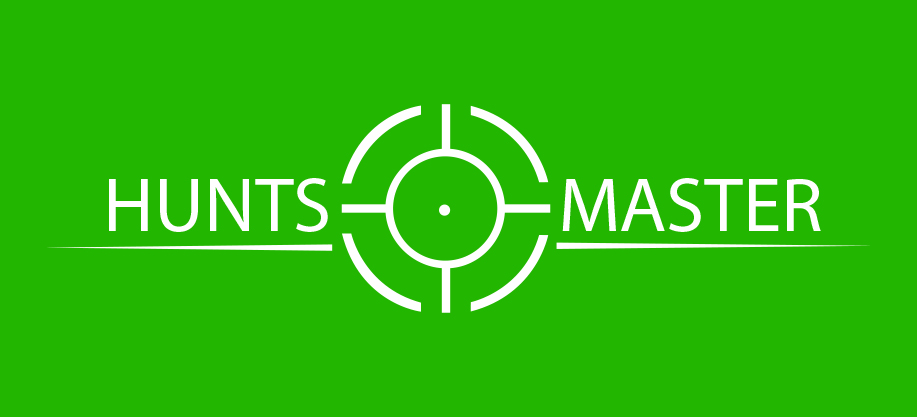

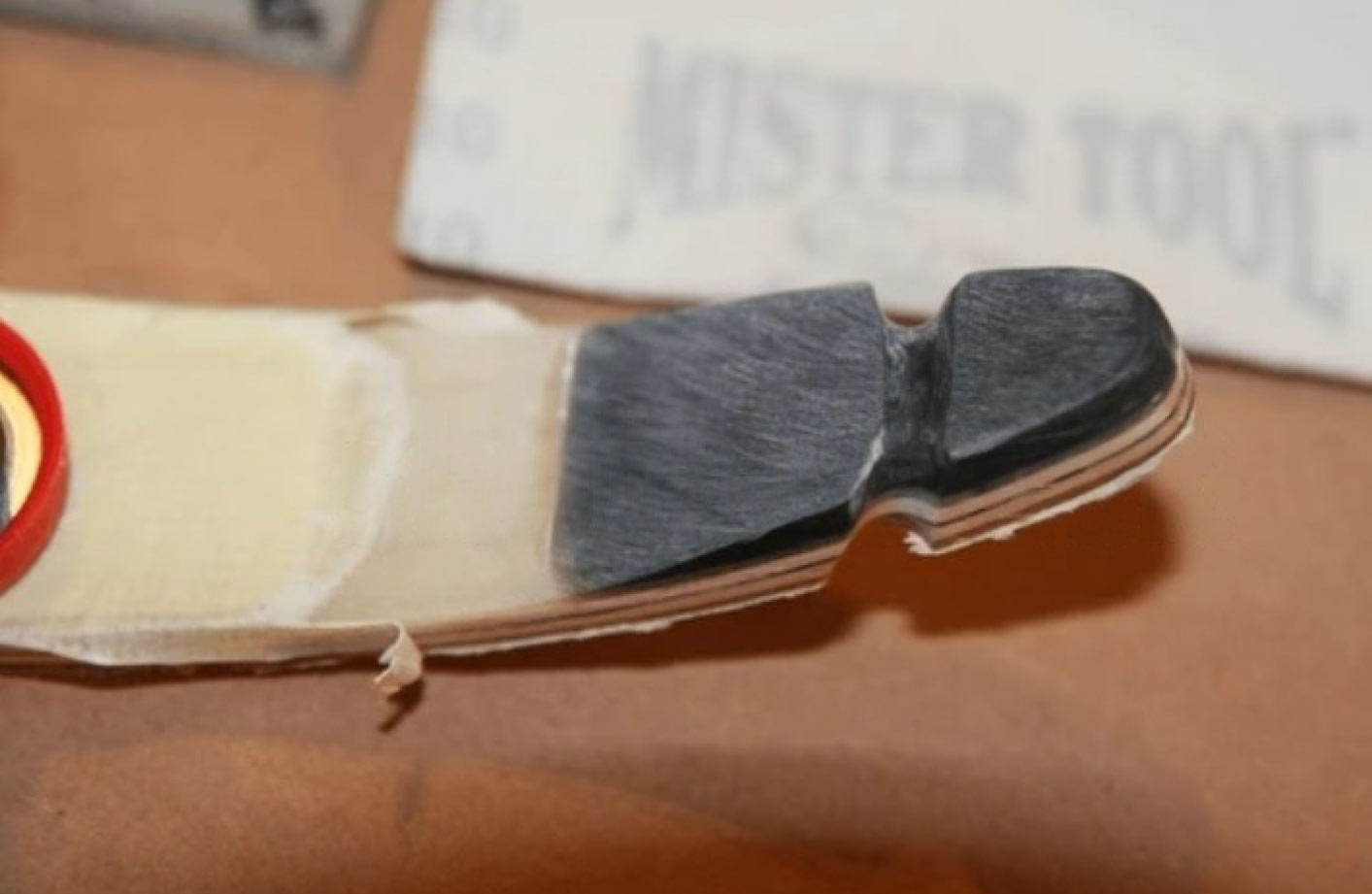
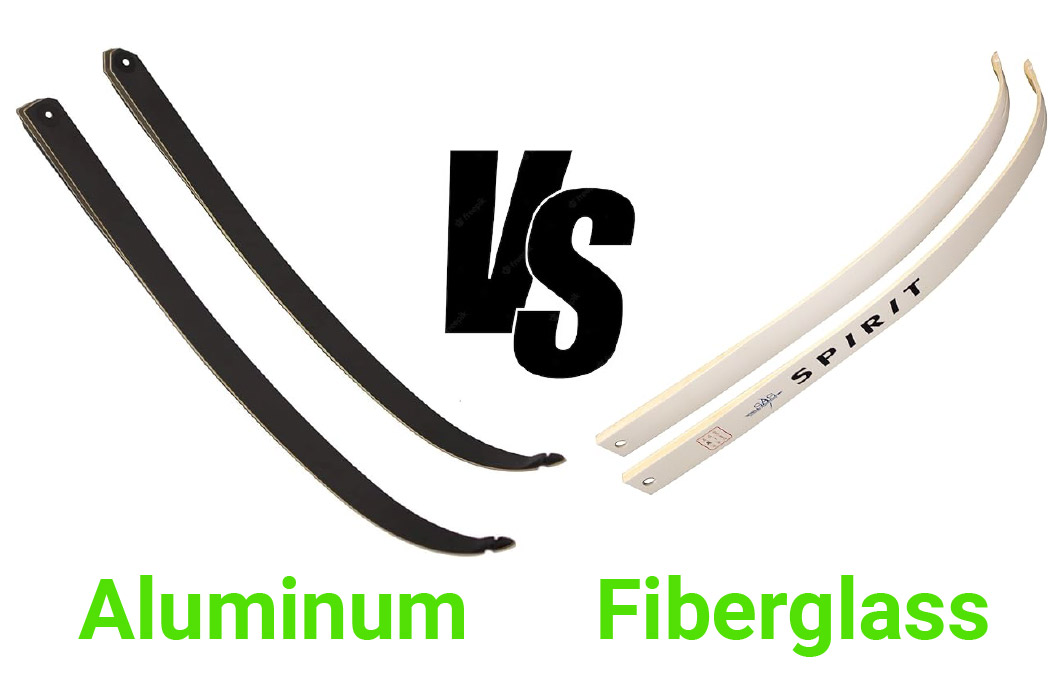
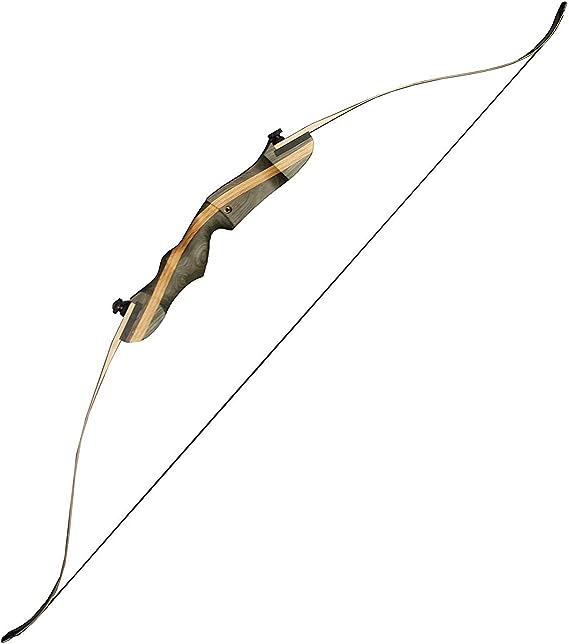
Pretty nice post. I just stumbled upon your blog and wanted to
say that I have really enjoyed surfing around your
blog posts. After all I will be subscribing to your feed and
I hope you write again very soon!
Also visit my web-site :: vpn special code
I like the valuable info you provide on your articles.
I will bookmark your weblog and check once more here frequently.
I’m fairly certain I’ll be told many new stuff proper right here!
Good luck for the next!
my blog – vpn special code